Since visiting Roosevelt’s Little White House in Warm Springs, Georgia, I’ve always found the 32nd US President’s life intriguing. FDR first came to the area in 1924 to seek treatment for his polio symptoms and his legacy continues to impact Georgia today. FDR founded the Roosevelt Warm Springs Institute for Rehabilitation, built a cottage (nicknamed the Little White House) where he died in 1945, and donated his personal land to create F. D. Roosevelt State Park. So it’s no wonder FDR’s historic home and presidential museum in Hyde Park, New York were on my bucket list.
The president grew up among wealthy, genteel families in Hyde Park along the Hudson River. During his third term as president, he donated 16 acres of the estate to the US government to construct the first presidential library. A year after his death, the National Park Service opened his home, located on the remaining property, to the public. Since we were vacationing in the Finger Lakes region of New York, we took a detour to include Hyde Park in the Hudson River Valley. Here, we could tour not only the FDR Presidential Library & Museum, but also Springwood, the Hyde Park estate he loved so much.
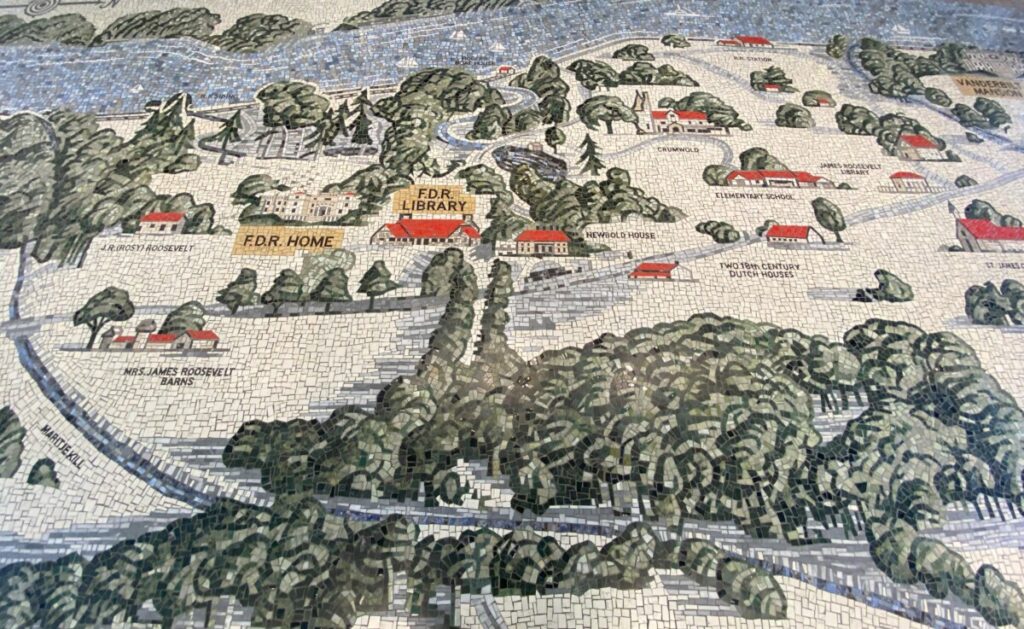
We entered the Harry A. Wallace Visitor Center on the grounds to purchase tickets. FDR Museum and Library tickets are $15 and sold by the National Archives and Records Administration, which operates it. To see FDR’s house (officially named Franklin D. Roosevelt National Historic Site), visitors must purchase a separate ticket at the National Park Service (NPS) desk. We received free tickets as NPS annual pass holders. The visitor center also features a 20-minute film, a large floor mosaic of Hyde Park, maps, information brochures, a gift shop, and a small cafe.
Springwood – Home of Franklin D. Roosevelt National Historic Site
Since our timed tour was set to begin shortly, we walked past the greenhouse and rose garden to the Coach House and Stables. Here, the park ranger began the 40-minute tour by explaining that FDR’s father, James Roosevelt, purchased the land and existing home in 1867 after a fire at Mount Hope, his home nearby. He renamed it Springwood and lived here with his first wife and son, “Rosy.” James was an avid horseman and built the Coach House in 1886. Inside, colorful displays of winning ribbons dotted the walls between the horse stalls with names such as
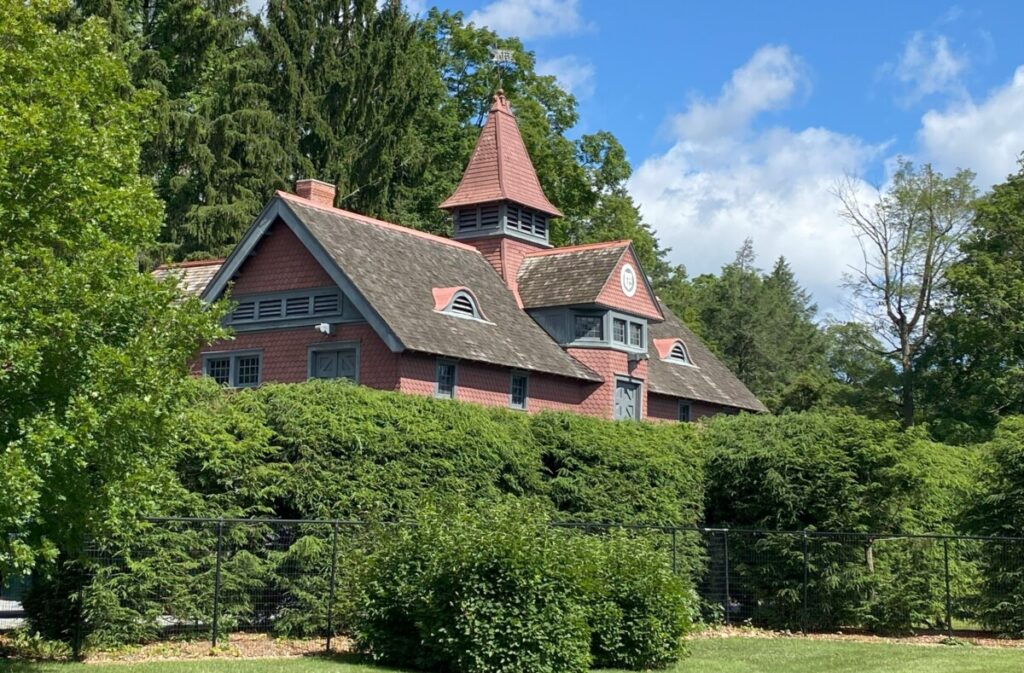
After his first wife’s death, James married the much younger Sara Delano. Their only child, Franklin Delano Roosevelt (FDR), was born here at Springwood in 1882. At the time, James Roosevelt was 54 and his half-brother Rosy was 28. Unfortunately, James Roosevelt died in 1900 when FDR was a freshman at Harvard. James bequeathed Springwood to FDR with the right for Sara to live there throughout her lifetime.
FDR Renovation in 1915
The ranger showed us a plaque with a picture of Springwood when FDR was growing up. It looked vastly different than the present-day house. The Italiante-villa home, built in 1793 and renovated in 1850, featured a three-story tower and front porch. As FDR entered the political scene, he needed a more prominent place to entertain, not to mention a larger space for his growing family, which included his wife, Eleanor, and five surviving children.

The house’s extensive renovation added 18 rooms and doubled Springwood’s space. Builders replaced the clapboard exterior with stucco, constructed two wings covered in stone, and added a third floor, all resulting in a Colonial-Revival look. Later, a columned portico graced the front entrance.
Springwood – First Floor
We entered the large entrance hall of Springwood, which showcased a dark wood wainscot and light-colored plastered walls. In one corner, a staircase led to the second floor. In another corner, a bronze sculpture of FDR sat in front of his bird collection. The ranger told us more about the house and encouraged us to wander through the first floor.
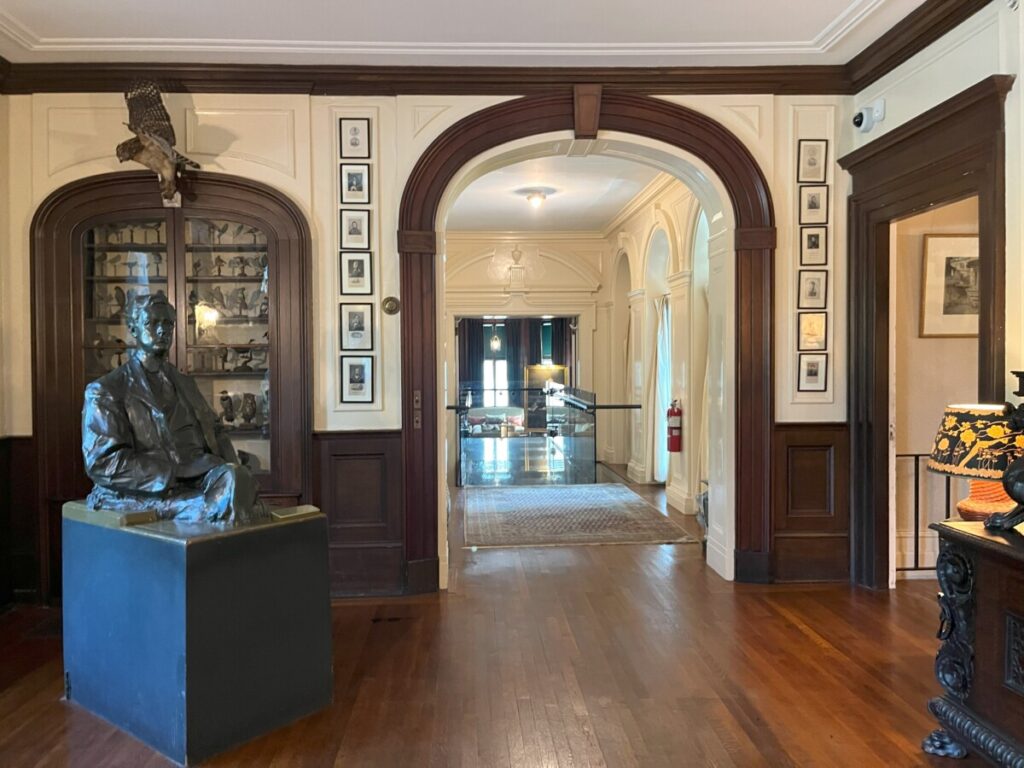
We passed a small room called the Snuggery down the hallway to the south wing. This was Sara Roosevelt’s office, where she managed the day-to-day affairs of the house. A ramp led down several stairs to my favorite room – the library.
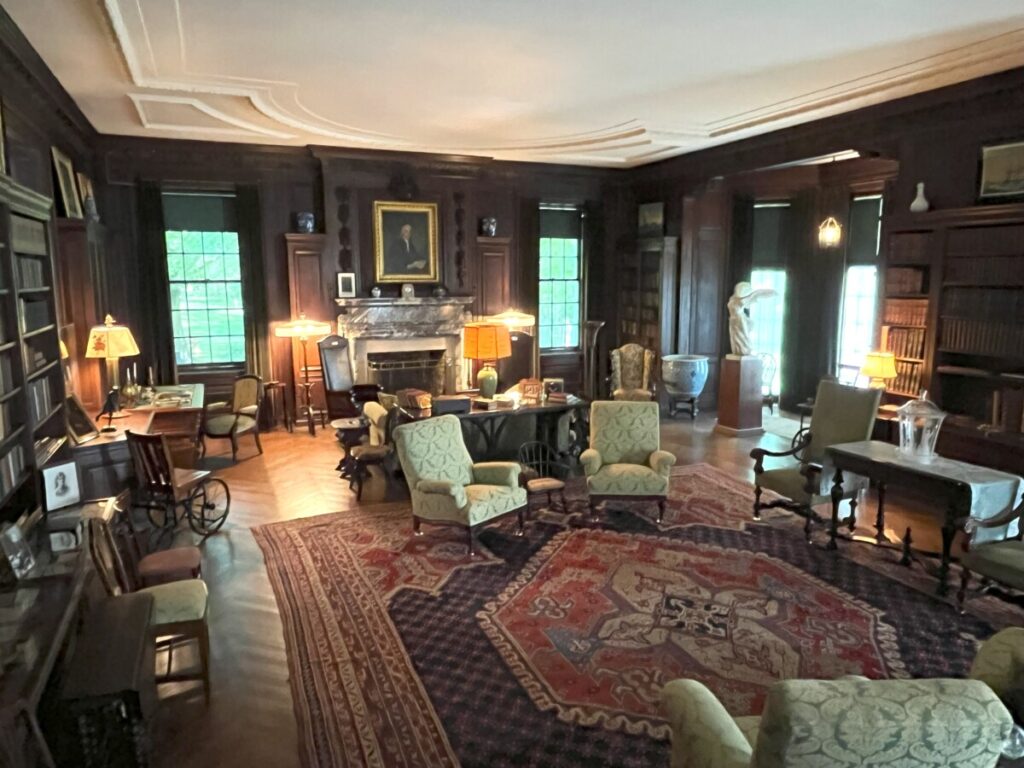
The large wood-paneled room with built-in bookcases provided a gathering spot for family and friends, with the vibe of a country estate. A portrait of FDR’s great-great-grandfather hangs above the fireplace at the far end. Isaac Roosevelt made his fortune in sugar refining and served on the New York Provincial Congress, the Committee of One Hundred, and later as a New York State Senator.
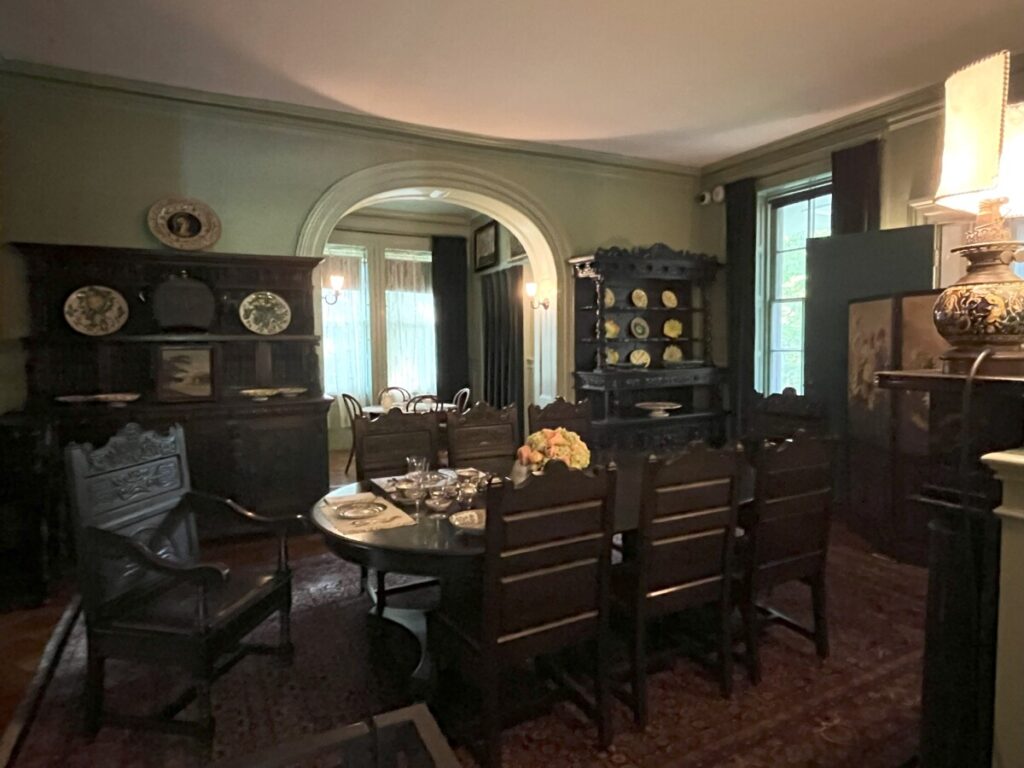
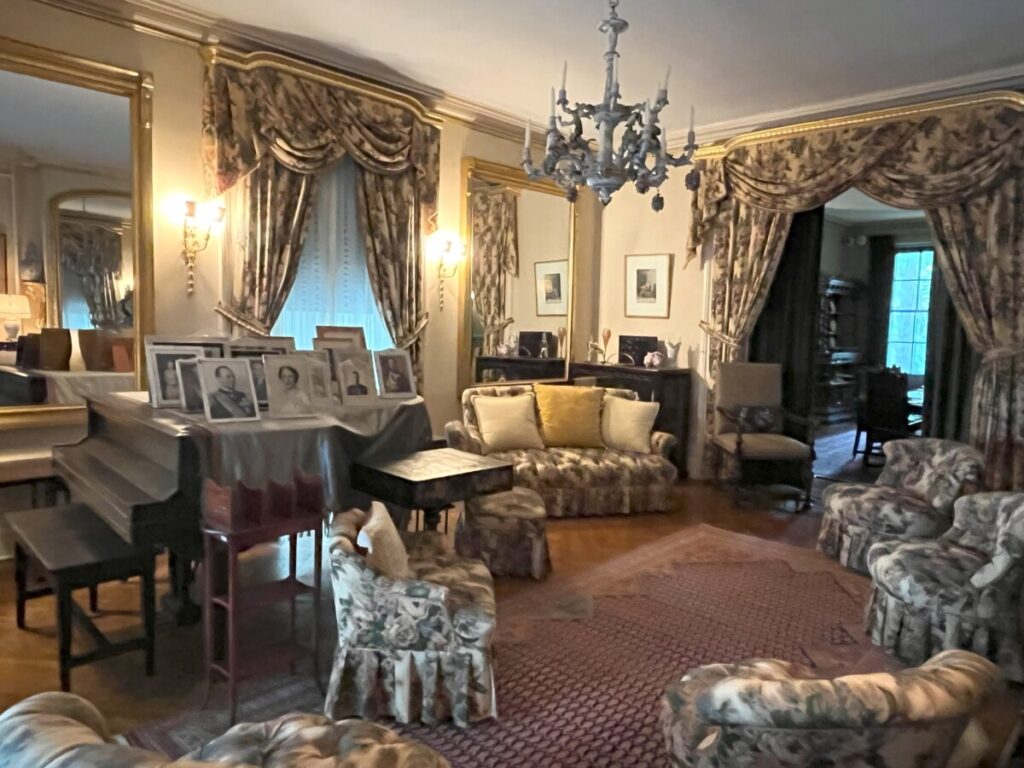
Off the main entrance were the Dining Room and the Music Room. Unlike the Biltmore or San Simeon, the Dining Room wasn’t an elaborate 20-seat spectacle. Instead, the table sat eight people. The ranger reminded us that Springwood was never meant to be an ostentatious showplace with ballrooms, bowling alleys, swimming pools, etc. The Music Room, which includes a Dresden porcelain chandelier and other pieces, was the entertaining space for the King and Queen of England in 1939. While not on display, the north wing included FDR’s office, smoking room, servant’s areas, kitchen, and pantry.
Springwood – Second Floor
Except for the ramp leading to the Library, there were no signs of FDR’s handicap. FDR believed that implementing handicap-accessible features would be akin to “giving in” to polio. Although the house had an elevator for heavy trunks and luggage, FDR didn’t use it except to hoist himself to the second level using the rope pulley.
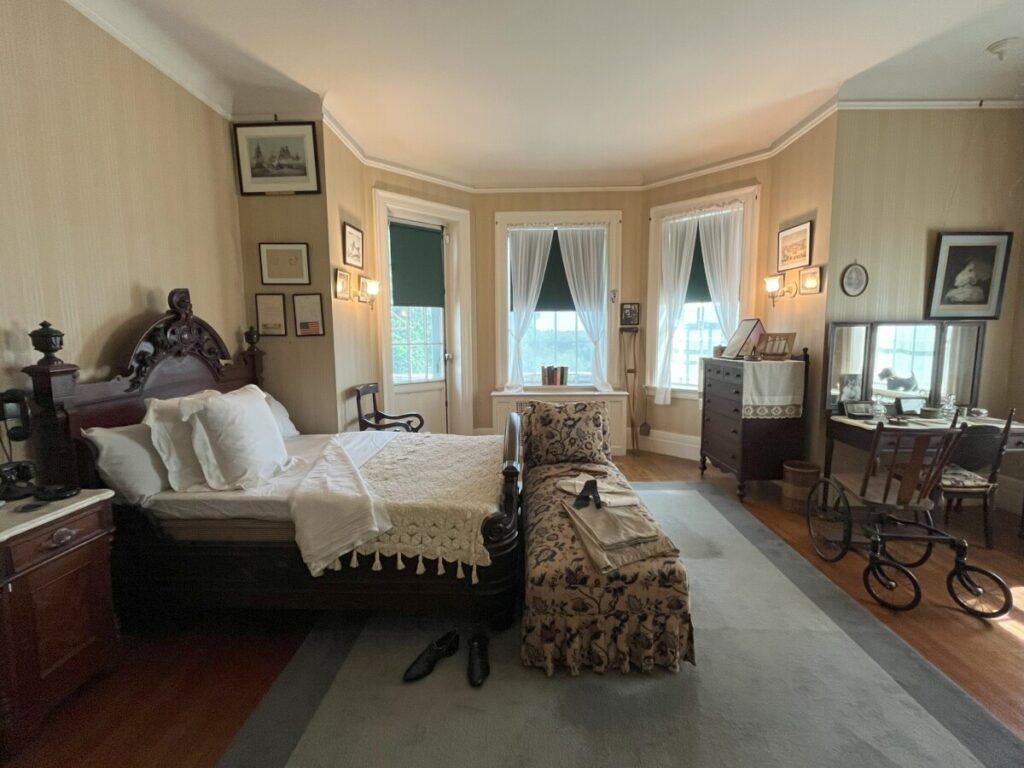
We could see how Springwood was really Sara Roosevelt’s home. FDR lived there, but Sara was the queen. The pictures below show Sara’s furnished bedroom with a bay window and two beds compared to Eleanor’s smaller utilitarian bedroom with only a day bed. Eleanor moved into this bedroom after FDR contracted polio so she could be closer to him.
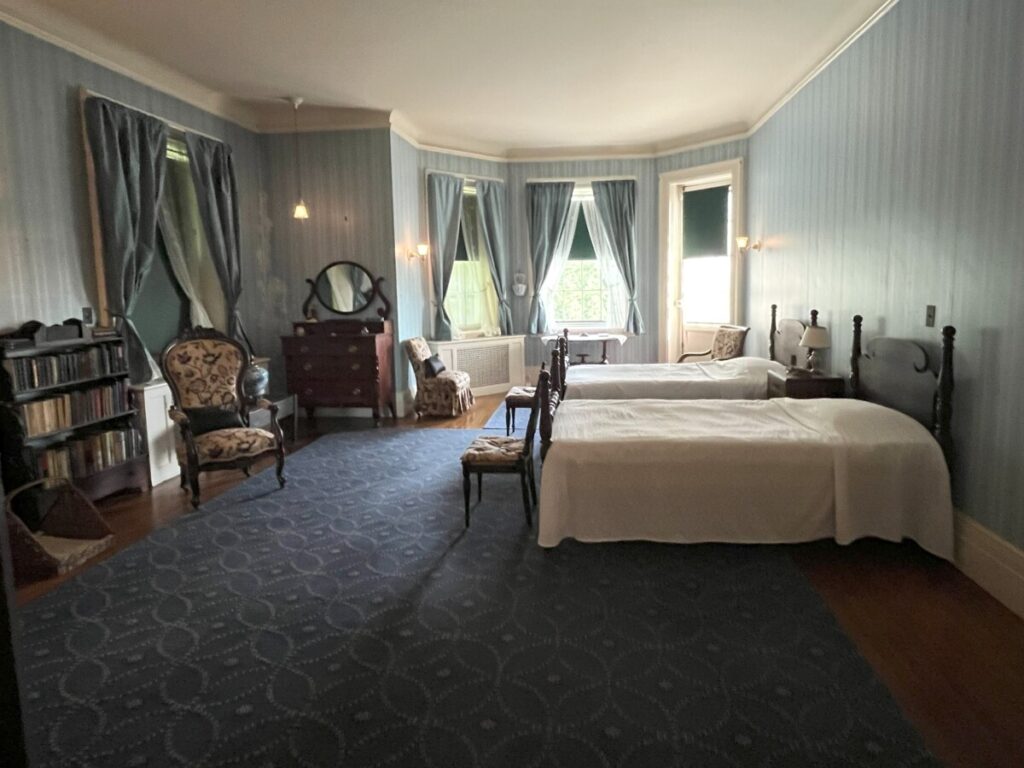

Eleanor Roosevelt retreated to Val-Kill, located a little over a mile away. FDR bought Val-Kill in 1911 and used it as a picnic spot. In 1925, Eleanor and two female business partners created Val-Kill Industries, which produced simple reproduction furniture and other handicraft items. The idea was to teach poor farming families new skills to earn more income. After the factory closed in 1935, Eleanor converted it into a home with multiple guest rooms. Eleanor spent her remaining time after FDR’s death in 1945 at Val-Kill instead of Springwood. Visitors can tour the Eleanor Roosevelt National Historic Site at ValKill, but we didn’t have enough time.
Springwood Grounds
Eleanor and Franklin enjoyed the views of the Hudson Valley from Springwood, which they always called Hyde Park. Off the South Wing, a screen porch was used to entertain guests.
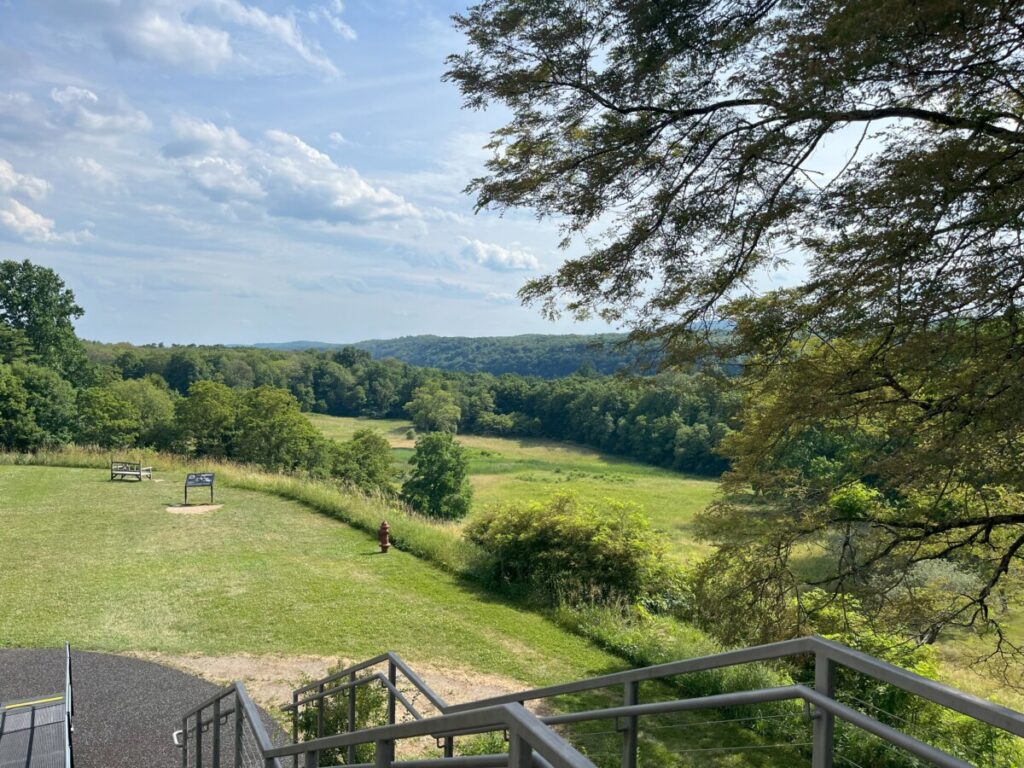

As FDR made plans for the library and museum, he dictated his burial wishes. He wanted to be buried in the Rose Garden with a simple, unadorned marble marker rather than an elaborate statue. When Eleanor passed away in 1962, her remains were interred next to him.
FDR Presidential Museum and Library
Now we walked over to the FDR Presidential Library & Museum. The collection is so extensive that tickets can be used for two days.
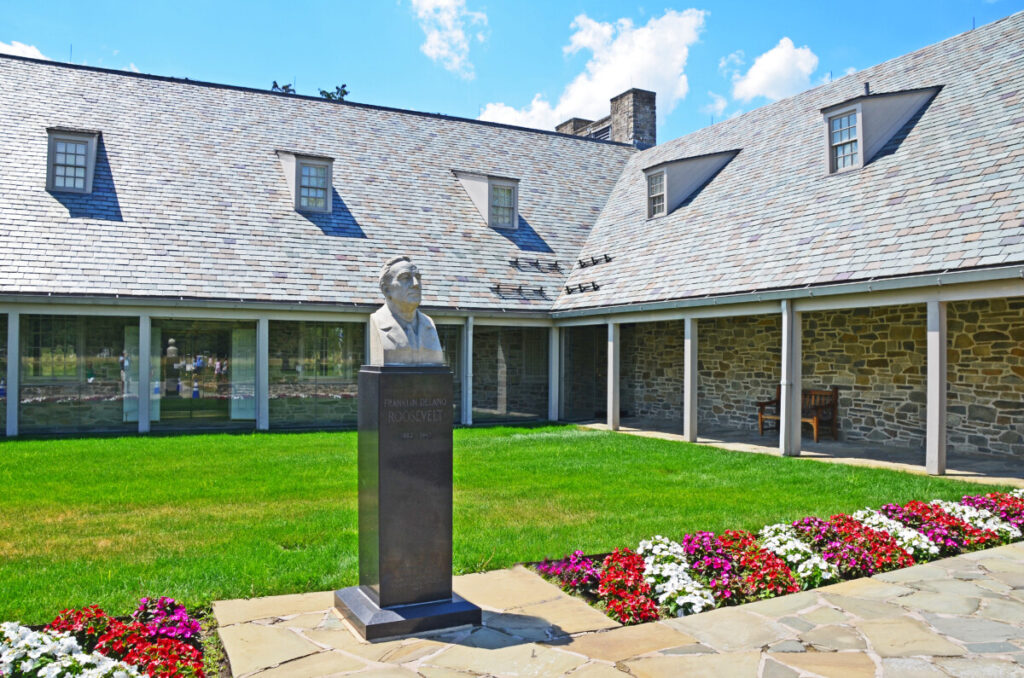
The FDR Presidential Library and Museum is unique because it is the first of 13 presidential libraries and museums operated by the National Archives and Records Administration (NARA). Before that time, presidents did whatever they wanted with their papers. Although most presidential papers ended up by gift or purchase at the Library of Congress, others were lost, damaged, or donated to local libraries. Harry Truman followed FDR’s example. Later, Congress passed the Presidential Records Act to manage this process.
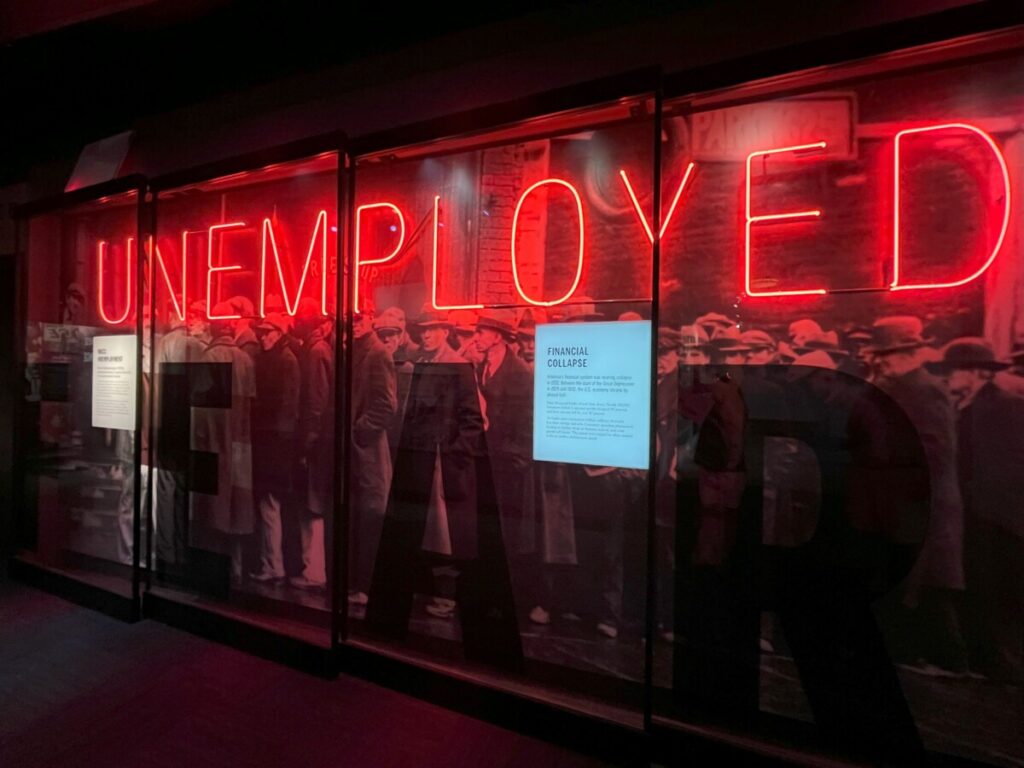
After entering the lobby, the museum takes visitors to the economic and political climate of the Depression. Mass unemployment, souplines, and poverty affected most of the US at that time.

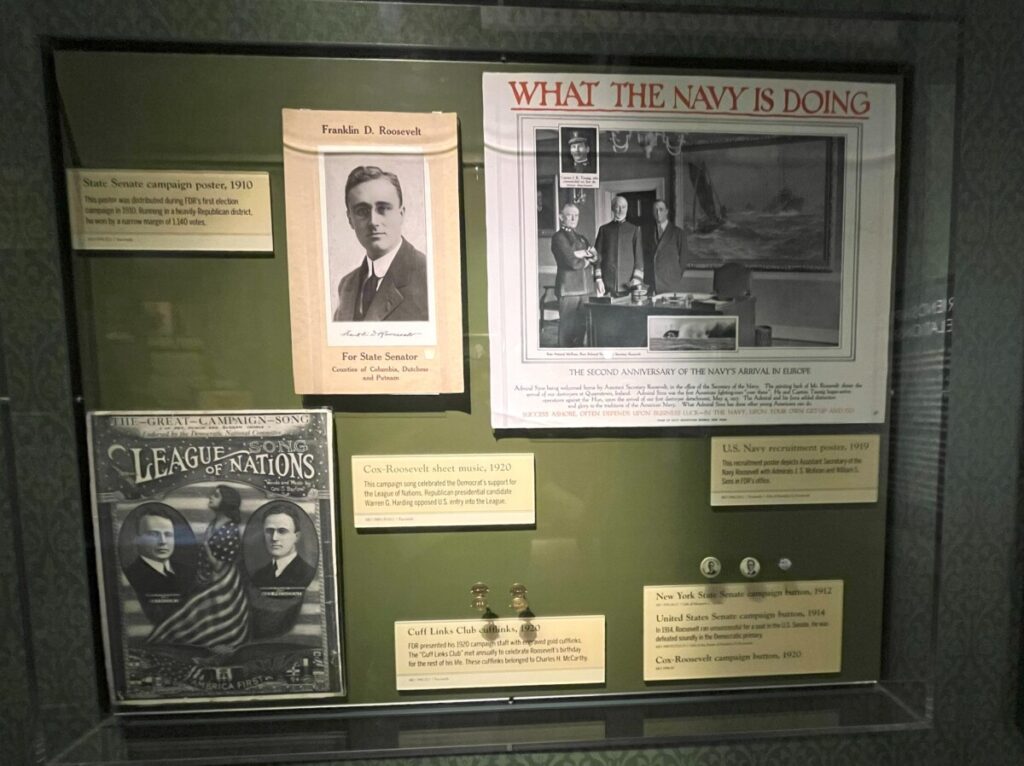
Soon, FDR emerged onto the political scene as a candidate for president. Campaign buttons, election results, and New Deal promises are shown. I particularly liked seeing FDR’s Dutch Bible from 1686, which he used at the inauguration. I didn’t know that Eleanor never wanted him to be president, nor did I know there was an assassination attempt on him in 1933. In the next room, we learned about FDR’s childhood, marriage to Eleanor, political ambitions, affair with Lucy Mercer, and diagnosis of polio.
FDR’s New Deal
The New Deal exhibit highlights FDR’s first 100 days in office, the repeal of prohibition, the Works Progress Administration (WPA), the creation of social security, the 1936 election, as well as Eleanor Roosevelt’s contributions. FDR was the first president to use radio to keep citizens informed. We entered a 1930s farmhouse kitchen to listen to one of his fireside chats.
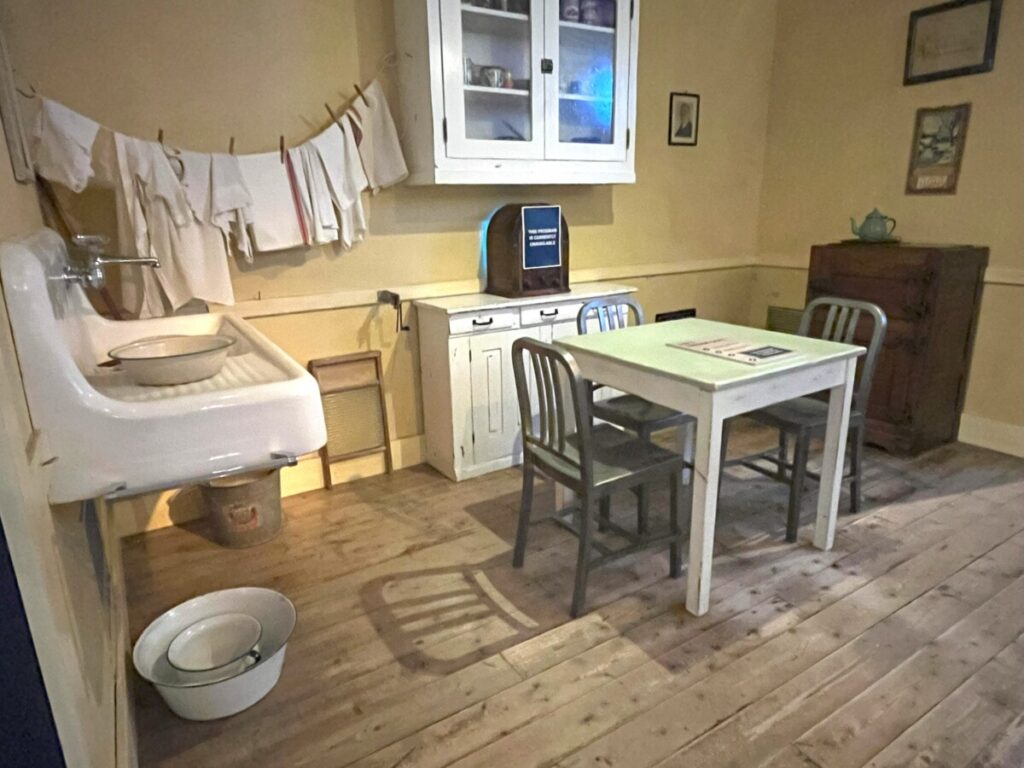
Before delving into FDR’s presidency during WWII, the museum takes visitors by FDR’s office at the library. In a perfect world, a presidential library opens after the president has left office. When plans for the library came about in 1939, most people assumed FDR wouldn’t seek another presidential term. However, with the threat of WWII on the horizon, FDR chose to run for a third and fourth term as he felt a change in leadership at this critical time would be detrimental. The library opened in 1941 while FDR was still president. He set up an office in the library and used it during his many visits to Hyde Park over the next four years.
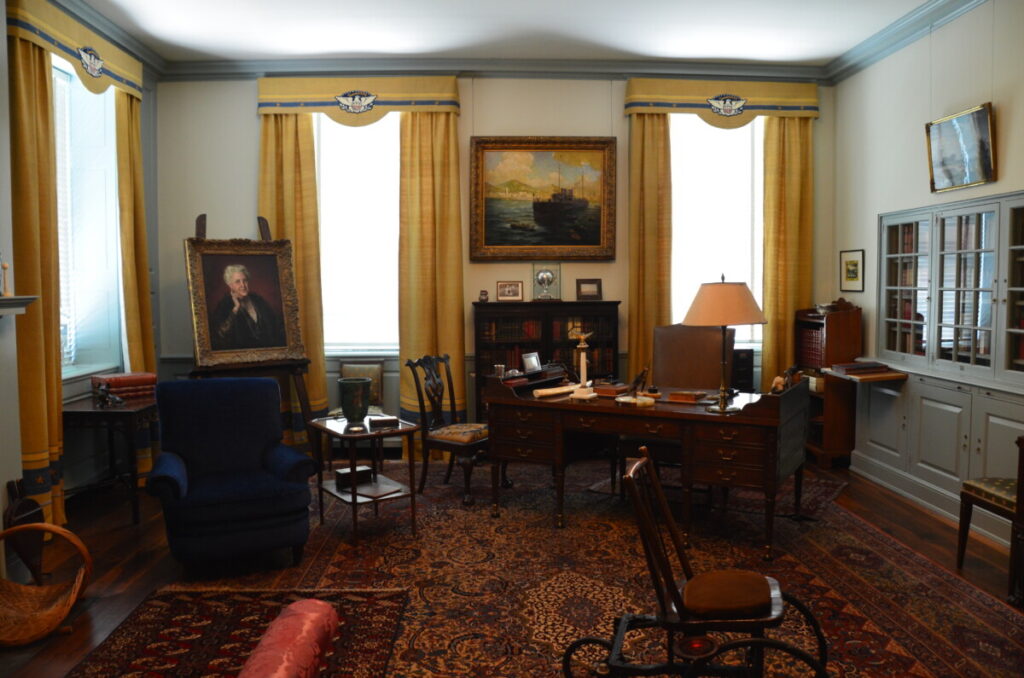
FDR and WWII
The War exhibit discusses everything leading up to and occurring during WWII. Roosevelt tried to maintain an isolationist point of view. Still, he understood the importance of aiding Great Britain in defending four freedoms he felt were due to every human being: freedom of speech, freedom of worship, freedom from want, and freedom from fear. I enjoyed seeing a marked-up copy of FDR’s edits to his “Day of Infamy” speech dated December 8, 1941.


During this time, FDR created a highly restricted Map Room in the White House. A replica stands in the museum today. The museum also details his friendship with Churchill, Japanese Internment, the reports of the Holocaust, the Big Three Conference, and his fourth term as president.
On the lower level, the WWII exhibit continues with newsreels during the war and FDR’s death in April 1945, just a few months into his fourth term. We walked past a replica of the Oval Office before heading into an exhibit about Eleanor Roosevelt. I certainly didn’t know J. Edgar Hoover had an FBI file on Eleanor.
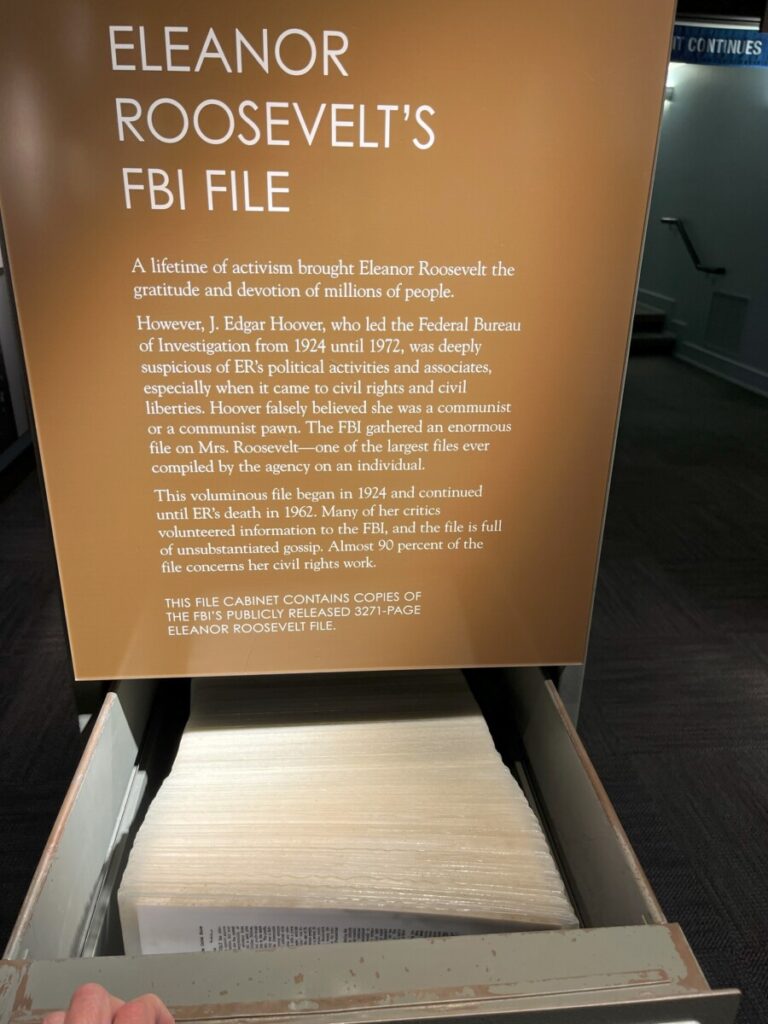
We were getting tired and breezed through the next few rooms. These included FDR’s large collection of paintings, his Ford, ship model collection, and more. No wonder the tickets are good for two solid days!
In Conclusion
For more information, visit the FDR Presidential Libary & Museum website here and Home of Franklin D. Roosevelt National Historic Site website here. Although we didn’t have time to visit Val-Kill Cottage, just a couple of miles away, the Eleanor Roosevelt National Site is also open for tours.
I’m in no way an expert, but I love learning all about our US Presidents. To date, I’ve visited the following Presidential Libraries & Museums: JFK in Boston, MA; LBJ in Austin, TX; Richard Nixon in Yorba Linda, CA; Jimmy Carter in Atlanta, GA; George H.W. Bush in College Station, TX; and George W. Bush in Dallas, TX.
Other Presidential sites I’ve toured – Mt. Vernon (home of George Washington) in Mt. Vernon, VA; Monticello (home of Thomas Jefferson) in Charlottesville, VA; Andrew Jackson’s Hermitage in Nashville, TN; Ford’s Theatre where Abraham Lincoln was shot in Washington, DC; Teddy Roosevelt’s Maltese Cross Cabin at Theodore Roosevelt National Park, Medora, North Dakota; (Franklin) Roosevelt’s Little White House in Warm Springs, GA; Truman Little White House in Key West, FL; Texas Book Depository Museum where JFK was shot in Dallas, TX; and LBJ Ranch in Stonewall, TX. We’ve also taken trips to DC to see all the Washington, Jefferson, FDR, Eisenhower, and Lincoln Monuments.
Stay tuned as I go back and write more posts about those visits!
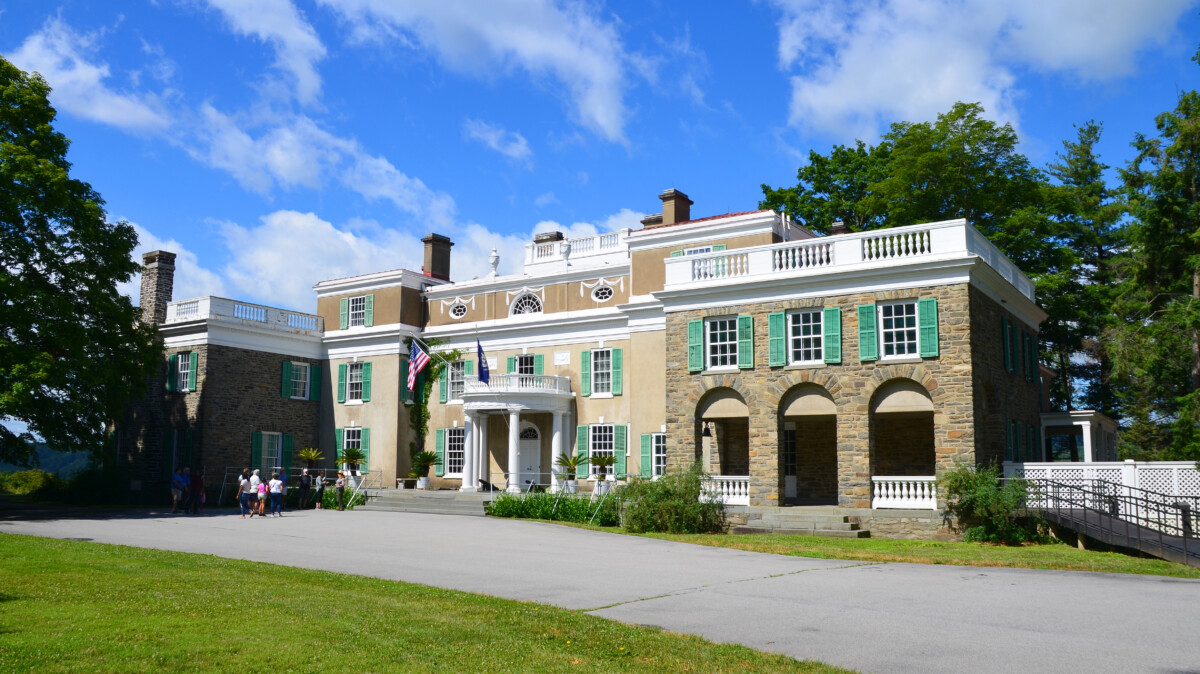
Pingback: Vanderbilt Mansion and the Hudson River Valley - New York • Finding Family Adventures
Pingback: Niagara Falls and Finger Lakes of New York Itinerary • Finding Family Adventures